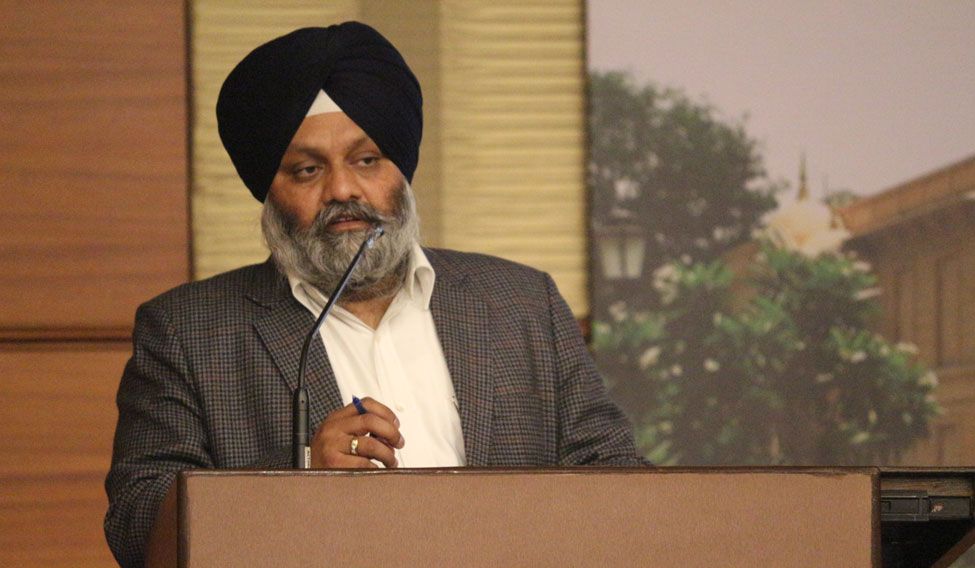India’s dalit businessmen, rarely successful and rarely heard, are pushing for voice platforms.
South Asia’s second chamber for poor opened in the Delhi on Tuesday, January 30, 2017, its members were assured by the organisers there will be more butter on their bread, even trips to snow-clad Davos.
Interestingly, there is one such chamber for the backward class, Dalit Indian Chamber of Commerce and Industry (DICCI), already operating in Mumbai. But organisers of the one floated on January 30, 2018 argued that they wanted to operate from the Indian Capital, home to all chamber of commerce, the ruling government and opposition.
“It is important to stay close to the power centre,” says Inder Iqbal Singh Atwal, the newly appointed director general of Dr Ambedkar Chamber of Commerce (DACC). What is important is that the DACC is largely an idea and still on paper, the members are yet to find a building in the Indian capital to start working (read lobbying) for the poor.
But the agenda is set, and the move has been welcomed by those who have been in the market for long, namely, the powerful Confederation of Indian Industry (CII), Federation of Indian Chamber of Commerce and Industry (FICCI) and Associated Chamber of Commerce (ASSOCHAM).
“We have some great dalit businessmen in India, will create some more capitalists in an year,” says Atwal. He will be backed by Dr G. Vivekanand, son of former central minister (late) G. Venkata Swamy, and also chairman of Vishaka Steel. Vivekanand, an advisor to the Telangana government, is also the president of Hyderabad Cricket Association (HCA).
The ruling NDA government, realising the importance of the initiative in the run up to the national polls – there are enough speculations that it will be held this year – pitched in its support. Minister of State for Social Justice and Empowerment, Ramdas Bandu Athawale, said it was time India helped entrepreneurs from dalit community. The minister even said it could be a milestone crusade in India’s economic history, his words sounding prophetic days before the annual Budget.
Dalits and people belonging to backward castes in India have a whopping 65 per cent plus population majority but rarely benefitted from the formal systems of business that exist in the country. Repeated studies have proved how bulk of India’s wealth stays with a handful of elites.
“Let people from backward castes turn entrepreneurs and shape their businesses,” said Athawale.
DACC hopes to be the much-needed bridge so that dalit businessmen get formal documents and legal structures common in the West, and eventually function productively. In India, those belonging to the lower strata often use their homes as collateral for loans to expand businesses and can’t trade things beyond the small circle where they are known and trusted. “But this needs to change because the poor must know they are not living outside the law and they are entitled to loans to start businesses,” said Atwal.
India’s poor versus rich dialogue is taking a serious shape. This week, Congress president Rahul Gandhi took to Twitter to ask PM Narendra Modi why 1 per cent of India’s population had 73 per cent of the country’s wealth. This was soon after Modi addressed the plenary session of WEF at Davos.
Gandhi quoted an Oxfam survey which claimed that 73 per cent of India’s wealth generated in 2017 was accumulated by only 1 per cent of the population.
But the Congress President was silenced when the Mumbai-based DICCI shared some interesting figures that said a whopping Rs 473,000 crore disbursed in loans by the government were availed by a huge 10 crore 40 lakh something population from the backward class, including SC/STs, an indication that the poor want to turn entrepreneurs and not seek jobs.
“Why some people thrive and others don’t no longer holds good in India, the poor is now moving ahead,” said DICCI president Milind Kamble.
Kamble said no one should expect a gold rush in India like it happened in the US in 1800s when miners squatted and staked their claims with shotguns. “Dalit chamber are now coming forward to do hand holding and push the poor out of poverty,” he said.
Commerce Ministry statistics show that in India only one crore backward people aimed to become entrepreneurs in 2001, the figure is almost close to 11 crores in 2017.
And it is the responsibility, claims Atwal, of chamber like DACC to ensure economic empowerment of India’s backward classes. On paper, it seems a herculean task, but certainly achievable, especially if your chamber is close to the country’s power centre.





